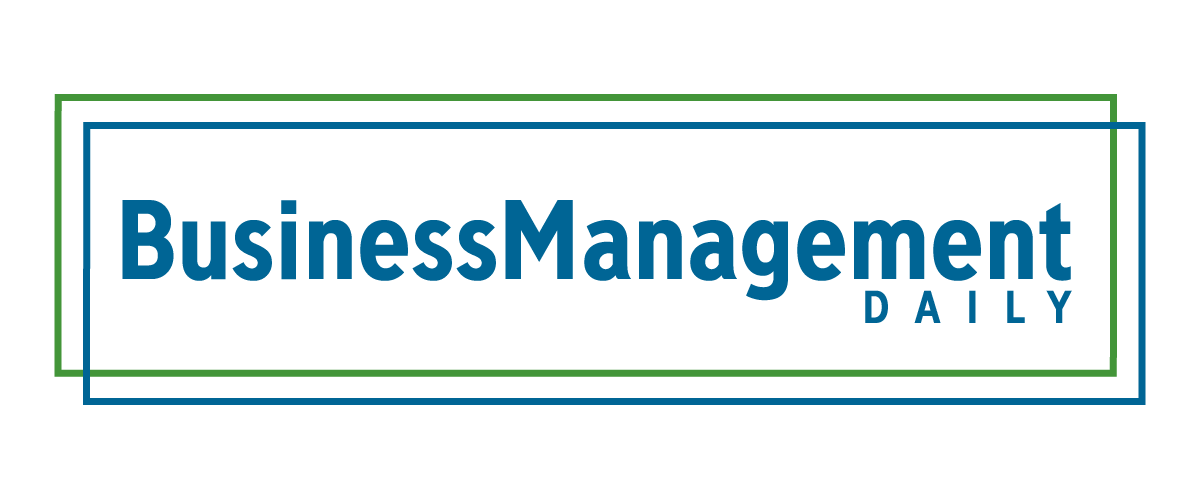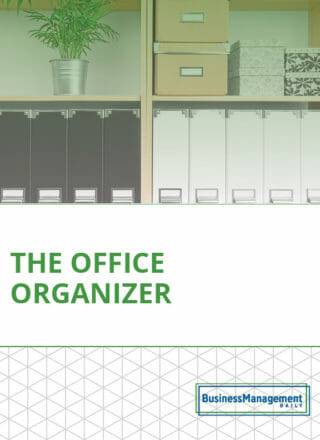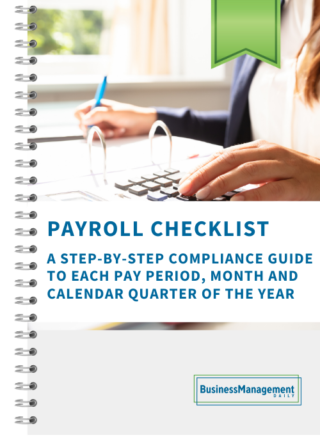Organizational performance: A guide to measurement & improvement
How to measure organizational performance
Every business owner wants their company to run well and achieve success. But how do you measure your organization’s performance?
You likely set plenty of great goals for your organization during the strategic planning process. The next step is to measure how well you’re meeting those goals. Once your company hits a target, it’s not just a matter of checking things off your list.
You’ll also want to examine whether you met each goal efficiently and effectively. This process is called measuring organizational performance, and it’s imperative for your business’s long-term success.
What is organizational performance?
Organizational performance measures how efficiently and effectively a company achieves its goals. There are a few subtypes of organizational performance that many companies measure, including:
- Financial performance: Your company’s ability to hit financial targets such as revenue goals and proper profit margins.
- Operational performance: How efficiently and cost-effectively manage your business processes and workflows.
- Shareholder return performance: The growth in investor’s shares over time and whether your stakeholders are getting a good return on investment through your business growth, dividends, etc.
The importance of organizational performance
Your organizational performance represents how well your organization is running, and having that information can help you improve decision-making and identify opportunities for improvement.
In addition, having high organizational performance provides many benefits for businesses, such as:
- Increased profitability and revenue growth
- Stronger market positioning and brand reputation
- Improved employee morale and retention
- Greater customer loyalty and satisfaction
- Enhanced ability to attract investment and funding
- Sustainable competitive advantage
Those with low organizational performance may need help in several areas, including employee engagement, revenue generation, and customer satisfaction.
Factors influencing organizational performance
Here are some key factors that can influence organizational performance.
Organizational culture
Creating a supportive, high-performance culture will encourage your employees to do their best work. A productive work environment will result when everyone is focused on achieving their goals and supporting the company’s mission.
Culture also includes how your company communicates internally, which can heavily impact organizational performance. Slow or vague communication can cause delays and inefficiencies in work processes.
It can also lead to employee disengagement or hiccups in change management processes, as employees prefer to feel like they’re being kept in the loop about what’s going on throughout the organization.
Leadership
Strong leadership vision and commitment are key to organizational performance. Leaders set goals for their organizations and are key to decision-making and problem-solving.
Leaders also influence the company’s organizational structure. Ultimately, they can significantly impact the company’s reputation, which extends to both employees and customers.
Leaders at every level impact employee engagement and productivity. Good manager-employee relationships promote better performance by ensuring that clear communications and instructions are given, employees are supported, and you provide a positive overall employee experience.
Higher-level leaders also represent the brand on a larger scale and closely impact brand reputation. Their decisions and directives also dictate business strategy, partnerships, and other choices that impact revenue growth, market share, and more.
External factors
Market changes, new competitors, or economic downturns can impact your organization’s ability to meet its objectives. While these factors are outside your control, you can mitigate their impact by adjusting your branding strategy, finding new ways to appeal to customers, or changing your pricing strategy.
Strategies for Improving Performance
If you want to improve your organizational performance, here are a few strategies.
Focus on employee engagement
Engaged employees are productive employees. Each employee plays a critical role in your organization’s overall performance, so look for ways to engage them more in your company’s initiatives and growth.
Ensure that each team member understands the company’s mission and goals and knows how their work directly contributes to them. Often, employees can feel unmotivated when their work doesn’t feel necessary. If you help them make the connection between their everyday tasks and the company’s overall success, it can inspire them to look at their work differently,
Leverage new technologies
Technology is constantly advancing, and many new technologies and software systems can significantly improve the efficiency of your internal processes. Consider upgrading your old, slow computers. Of course, you should also upgrade slow software systems.
In addition, explore automating your workflows with AI-powered tools. Ultimately, investing in the latest technology can significantly impact your organizational performance.
Increase training and development opportunities
Supporting your employees’ professional development increases engagement and retention, helps them perform better, and contributes meaningfully to your overall success.
Look at your current development program and consider where you could introduce new and improved employee development strategies to promote performance improvement. Consider implementing new training offers.
Additionally, create employee performance development plans, set aside time for employees to explore their professional interests, and encourage them to learn new skills regularly. This will foster growth and development within your team.
Identify internal roadblocks
Regularly review your processes and metrics to identify things hindering your organizational performance. This can include things like inefficient processes, slow approval processes, or a lack of alignment on priorities and goals,
Measuring organizational performance: KPIs and metrics
Measuring organizational performance on an ongoing basis is essential for tracking progress and better identifying internal roadblocks and inefficiencies. Here are some tips for setting key performance indicators (KPIs) and metrics to measure your company’s performance.
Measuring individual performance
Measuring each employee’s performance at an individual level is essential, as it impacts the overall team and organization performance. However, it can also reflect your company’s organizational performance or lack thereof. The good news is that you’re likely tracking and evaluating individual performance fairly closely for annual performance reviews.
Some things to consider when evaluating individual employees as part of your organizational performance assessment include:
- Task performance: The employee’s ability to complete assigned tasks within their job description efficiently and effectively.
- Adaptive performance: A measurement of an employee’s ability to respond and adjust to changes at work, such as shifting priorities or new processes.
- Contextual performance: How well employees can complete tasks outside of their core responsibilities.
- Counterproductive work: Negative attributes or habits that hinder organizational performance, such as absenteeism or difficulty working with peers,
Measuring team performance
Measuring team-level performance is valuable in understanding what works and where process improvement may be needed. The exact metrics and KPIs will vary depending on the team’s function.
For example, the sales team would focus on metrics such as conversion rate, achieving sales revenue goals, sales cycle length, and churn rate.
Measuring organization-wide performance
Now, it’s time to take a big-picture look and analyze the full organizational performance of your company. Here are some metrics to consider:
- Achievement of objectives: Whether your company meets its goals in the set timeframe.
- Employee satisfaction and retention: Analyze metrics such as turnover and retention and conduct employee feedback surveys to obtain even more detailed data on how your employees feel about your organization, its leadership, and their work.
- Customer satisfaction: Analyze KPIs such as customer satisfaction ratings, customer retention, customer churn rate, and net promoter score to see how your organization performs with its customer base.
Future trends in organizational performance
Like all areas of business, organizational performance is constantly changing and evolving. Here are two trends to remember as you work to improve your company’s performance.
AI and automation
The increased usage of AI and automation tools is one of the biggest trends in organizational performance, and it’s not slowing down any time soon. AI-powered programs can increase organizational performance by making your processes more efficient.
It can significantly reduce your employees’ time spent on administrative tasks if used correctly. This frees up time for them to focus on more critical tasks that require a human touch, such as strengthening interpersonal relationships with customers and partners.
As we move forward, the key focus is to find the right ways to leverage this technology to boost organizational performance rather than subtract from it. Remember that efficiency is just one piece of the puzzle, and organizational performance is also about doing things most effectively.
Misusing AI can potentially harm your brand reputation or customer satisfaction. For example, you may want ChatGPT to write only some of your website copy or create your social posts, resulting in branding that lacks voice or reads sloppily.
Similarly, while AI chatbots can efficiently answer common questions, many of your customers will still want the option to call and speak to a human.
Organizations face a challenge. They must find the right balance. Specifically, they must determine which areas of their business can be automated. Simultaneously, they must decide where they should still rely on their skilled employees. This is true now and will continue to be important in the future as AI advances.
Maintaining organizational performance amid economic uncertainty
While organizational performance relies on several internal processes and factors, outside events can also influence it. Economic conditions, industry trends, and the political climate can affect how well your company meets its goals (or if it can meet them).
Large companies and individual consumers are experiencing some anxiety about the economy as we head into 2025. There’s been much recent discussion about new tariff plans potentially going into effect and how that would impact the costs of materials and goods.
As such, it’s a good idea to start thinking about maintaining organizational performance if the cost of goods rises and consumer spending declines in the coming year.
What adjustments can be made to cut operating costs for your business, reduce materials costs, or find a way to engage customers in a potentially shaky economy?
Even in less tense economic and political times, it’s a good idea to be agile in responding to changing market conditions and customer demands and have some ideas on how to make those shifts should a need arise.
Additional resources:
Organizational health: Understanding its components and impact ![]()
Understanding organizational culture, and why it’s important ![]()
Organizational strategy examples: Learn from the best companies ![]()



